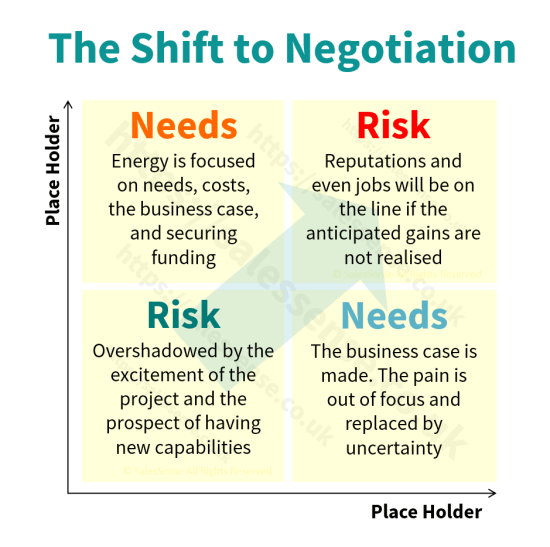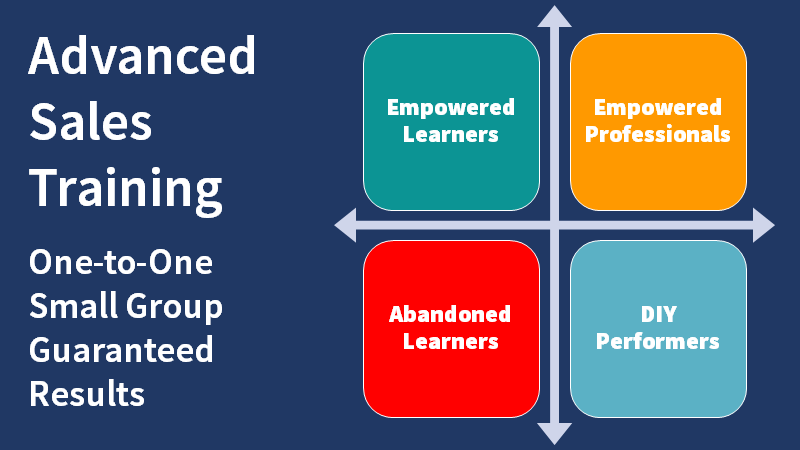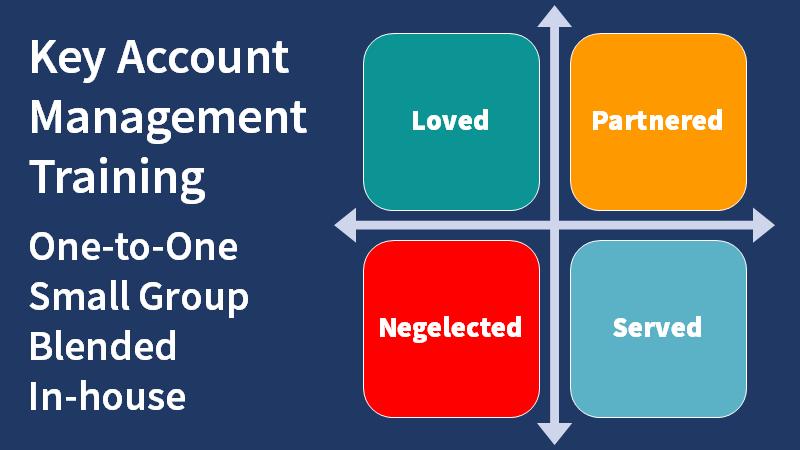On-the-job actions for improving sales closing techniques.
The sales closing techniques and methods presented on this page are aligned with the Sales Skills Assessment.

- Discovering the customer's preferred choice.
- Changing the customer's preferred choice.
- Knowing when to close.
- Negotiation skills.
Improve the ability to know a prospective customer's prefered choice with the following actions:
List what you want to notice before you attend meetings and then commit your list to memory.
The human mind is perfectly capable of noticing and remembering details, however, it is lazy. Insist your mind does its job. If you have memorised what you want to notice in the meeting, your mind will automatically pay more attention to the things that you have decided to notice. The following is an example list for recognising the customer's preferred solution:
- The alternatives being considered.
- The level of influence those present have over the decision.
- The enthusiasm for each alternative that is being considered.
- The arguments that are being entertained for and against each alternative.
- The decision-making process that will be used to decide.
During meetings ask appropriate questions, for example, "What other solutions have you considered?"
Having a memorised list of things that you want to notice will prompt you to ask appropriate questions. Be careful to avoid biased questions that emphasise your solution unless you have first established that the people you are meeting prefer your solution. If you are unsure, ask soft open questions. You could try, "What do you consider the advantages and disadvantages for each alternative that is still in the running?" and "How will you decide between them?".
These articles offer further ideas:
- Five Ways to Develop Trust Fast
- Becoming More Persuasive
- Fifteen Ways to Increase Mind Reading Ability
Improve the ability to change a prospective customer's preferred choice with the following actions:
Take the trouble to fully understand the reasons for the preference.
If a potential customer prefers a competitor's solution, never assume you know why or accept the first reason given. Studies have found that the real reason is most often given last after a salesperson has politely pressed them to say more by asking, 'Do you have any other reasons? Price is rarely the true reason for a choice. Depending on the scale of the requirement and the complexity of the solution, many people may be involved or have an influence over the decision. It may be that the key individuals have formed a trusting relationship with the competitor, or that powerful stakeholders such as business partners, customers, or shareholders have a preference. It may be that the competition got there first or that they have done a better job of positioning their solution. Seek first to understand, as Stephen Covey put it.
Find the leverage points that offer the greatest chance of changing the minds of key decision influencers.
For complex sales, it may be necessary to map out relative influence, preferences, and your standing for the powerful people involved in the decision. This is fully explained in our Winning Complex Sales programme.
You need leverage such as a significantly better fiscal outcome or higher risk of a negative outcome to motivate a change in the decision criteria, preferred solution, or expected buying decision.
Explain to each key influencer how changing the basis of their decision by changing or expanding the criteria will benefit their organisation.
You will need to bring the potential advantages to the attention of the right people. They are likely to be those most impacted by the new information, idea, or perspective who also have sufficient power or influence to change the way the decision will be made.
You may need the help of an influential ally inside the customer's organisation.
Deal with any enemies or supporters of competing solutions.
Enemies are influential or powerful people who are against your winning. If you can understand their motivation you may be able to change it. Common reasons for opposition include past sins, a personality clash, and a strong preference for the competitor's solution.
A detailed explanation of how to influence such people is addressed elsewhere in this guide and fully explained in our Winning Complex Sales programme.
These pages offer further resources and ideas:
Improve sales closing techniques with the following actions:
Closing a sale is much easier to achieve when the close is agreed upon at the qualification stage, before evaluation resources are committed by either buyer or seller.
Use these steps to set up the close with decision-makers and key influencers in advance:
- Confirm that the issue - problem or opportunity - is real and that there is a common understanding of the causes or events that led to the need.
- Confirm that the consequences of inaction are sufficient to force the active pursuit of a solution.
- Confirm or establish a differentiated buying vision that will address the issue, fix the pain, or realise the opportunity.
- Confirm that there is a sufficiently compelling cost justification.
- Confirm that the costs are understood, are affordable, and the funding source is identified.
- Confirm a formal buying process has been or is about to be started and that it will result in a yes/no decision once the process is concluded.
- Agree on an evaluation plan and timeline that involves you and your organisation as much as is practical.
- Confirm all of these circumstances in writing via email and a real letter.
Notes:
The ease of closing and any final negotiation depends on how many of these circumstances are confirmed in advance.
This works because people and organisations who value their integrity feel an obligation to fulfil their part of a bargain struck at the beginning of a sale.
Most sales that are set up this way close naturally, without much effort or risk on the part of the seller. The closing question becomes merely a formality.
The greater the seller's involvement in the customer's buying process, the easier it is to know what is happening, how the sale is progressing, and what to do if customer circumstances or competitor actions threaten success.
These pages offer further resources and ideas:
Improve negotiation skills with the following actions:
Decide your walk-away position.
If you begin a negotiation without a clear idea of how far you are willing to go to reach an agreement and the other party is a combative or hostile negotiator you are very likely to agree on a lose-win deal.
A lose-win deal is one that you will be dissatisfied with afterwards. If there are many variables, you may need to decide on several parameters and scenarios to define your walk-away position. Take care that you don't set your walk-away position too high less you are forced to abandon it. Your walk-away position must be set where 'no deal' is a better option, where the outcome will survive the hindsight examination and leave you satisfied that you chose to walk away.
For every negotiation, make a serious attempt to work out, calculate, or estimate the other side's walkaway position.
It doesn't matter if you are wrong. Having decided what you think it is, once in the negotiation you will be alert to its existence and will be able to test for the other side's true walkaway position.
Prepare two lists.
The first should contain all of the things that you have the ability to change or adjust and the second list should include all of the things that the other side can change or adjust.
The lists contain the things that can be changed in a negotiation. They are the source of value exchange. All of the variables have different values to each side, thus offering the potential to find value-margin.
Decide in advance what would be a fair outcome or in other words, a position or positions that would be fair for both sides.
This will help you seek a win-win position. A win for both sides is the only outcome that will sustain a long-term business relationship.
These pages offer further resources and ideas:
See Mastering Sales Negotiations for a comprehensive negotiation skills training course.
Get the entire collection of over 100 hyperlinked on-the-job sales skills development actions together with our sales skills assessment in a neat indexed PDF document.
If you need to improve sales closing skills or learn selling techniques, we can help. Telephone +44 (0)1392 851500. We will be pleased to discuss your needs or talk through some options. Alternatively, send an email to custserv@salessense.co.uk for a prompt reply or use the contact form here.












